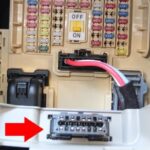For car enthusiasts and DIY mechanics in 2016, having a reliable OBD2 scanner was essential for diagnosing car issues at home. While basic ELM-327 scanners were available, many users quickly realized their limitations. One scanner that stood out in user discussions for its enhanced capabilities was the BlueDriver. Let’s delve into why BlueDriver was considered among the best OBD2 scanners in 2016, based on real user experiences.
Generic ELM-327 scanners were a starting point for many, offering basic OBD-II code reading. However, as one user discovered, “I had one ELM-327 go bad on me, and the second one seemed to work OK.” This highlights a common concern with cheaper options: reliability and basic functionality. While they could read generic codes, they often lacked the depth needed for comprehensive diagnostics.
Moving beyond the basics, the user shared their positive experience with the BlueDriver scanner, noting its superior performance: “But the BlueDriver reads more than the basic OBD-II codes.” This was a key differentiator. BlueDriver was praised for accessing advanced diagnostic information beyond standard powertrain codes. Running it on a ’09 CR-V, the user was “surprised when I ran it on one of our ’09 CR-Vs and got a long history of items it was storing.” This ability to retrieve historical data and a wider range of codes, including manufacturer-specific codes, set BlueDriver apart.
The detailed reports generated by BlueDriver were another significant advantage. The user mentioned, “Here’s the report it generates as a PDF,” showcasing the professional and easy-to-understand format of the diagnostic reports. These reports provided a clear overview of vehicle health, making it easier for users to interpret the data and plan repairs.
One particularly useful feature highlighted was BlueDriver’s ability to check TPMS (Tire Pressure Monitoring System) codes, in addition to standard OBD-II and ABS (Anti-lock Braking System) codes on compatible vehicles. The user noted errors for the “rear right tire sensor (low battery and lost transmission)–BlueDriver is also checking the TPMS codes here.” This broader coverage meant users could diagnose a wider range of issues with a single tool, increasing its value and convenience.
Beyond functionality, portability was another advantage. The user pointed out, “BlueDriver is even smaller than the ELM-327 units. Great for taking on a road trip, or when shopping for used cars.” Its compact size made it an ideal tool to keep in the car for on-the-go diagnostics or pre-purchase inspections.
While BlueDriver offered significant advantages, it’s important to note vehicle compatibility in 2016. As the user mentioned, “For our ’04 Civic, it cannot read the ABS codes–vehicle support at the time did not go back that far.” However, they also acknowledged BlueDriver’s ongoing development: “But that could change, since they actively develop the app and firmware to support more vehicles and more codes.” This commitment to improvement further solidified BlueDriver’s position as a leading OBD2 scanner choice.
In conclusion, for anyone seeking the best OBD2 scanners in 2016, particularly those wanting more than basic code reading, BlueDriver emerged as a strong contender. Its ability to read advanced codes, generate detailed reports, cover systems like TPMS, and its portability made it a valuable tool for both everyday car maintenance and more in-depth diagnostics.
